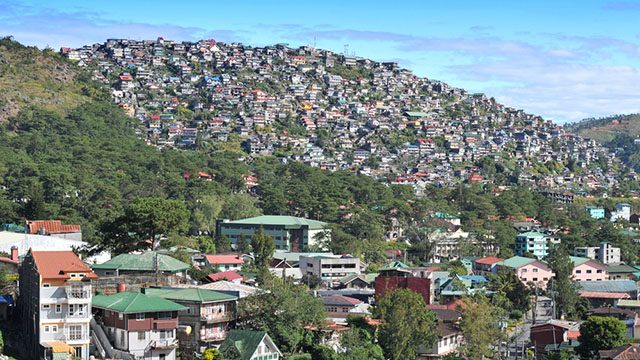SUMMARY
This is AI generated summarization, which may have errors. For context, always refer to the full article.

BAGUIO CITY, Philippines – The government has kicked off a series of consultations on its proposed Green Building Code (GBC), which is targeted to be ready by June 15, 2015.
In the first round of consultations on November 4, the Department of Public Works and Highways (DPWH) conferred with architects and engineers from the Cordillera Administrative Region (CAR) and Region I.
The planned code will not replace the National Building Code of the Philippines but will be a separate regulation to be used as a reference for the construction of “green” buildings.
The draft code introduces electricity and cost savings methods for new buildings – specifically malls, offices, hotels, residential condominiums, retail establishments, schools, and hospitals falling under the minimum qualifying criteria identified by the code. (READ: Condo living with a green conscience)
The Green Building Code focuses on energy efficiency, water and wastewater management, materials sustainability, solid waste management, site sustainability, and indoor environmental quality according to Architect Emelito Punsalan, Technical Consultant of the World Bank’s International Finance Corporation, the project partner of DPWH. (READ: 10 features of a ‘green’ building)
Reduced carbon emissions
Punsalan said the objective of the proposed code is to reduce the demand for energy and thus, reduce greenhouse gas emissions produced by power generators.
He said that buildings are the third biggest source of carbon dioxide in the world due to electricity consumption, after fossil fuel industries and the transport sector.
Punsalan envisioned that if old-buildings will be retrofitted following green building standards, a lot of electricity will be saved, reducing carbon emissions and pollution.
Although Punsalan recognized that the construction of green buildings is costly for start-ups due to the need to build energy-efficient airconditioning systems, heat-deflecting window glass, water-saving faucets and toilet flushing systems, one can recover the cost of investment with lower operating costs.
Johnson Domingo, executive director of the DPWH National Building Code Development Office told stakeholders that the implementatin of the proposed code would reduce carbon dioxide emissions by 1.9 million tons.
Domingo added: “Commercial buildings consume 36% of annual national energy consumption. The strict implementation of the code can save 4 million megawatts per hour of electricity by 2030.”
He also said if all new buildings in the country will be required to follow ecologically-sound building standards starting 2015, businesses and consumers can save up to P35.2 billion ($800 million) by 2030.
Domingo said the DPWH targets to finish its series of consultations by March 2015 in order to produce the final draft of the Green Building Code on June 15, 2015, the DWPH anniversary.
Green governance
In Baguio City, the City Buildings and Architecture Office recorded at least 90 new structures since 2013, further decongesting the central business district.
Baguio City Budget Officer Leticia Clemente said the draft Green Building Code is in accordance with the summer capital’s vision of developing a sustainable environment with green governance as its core thrust.
Clemente cited earlier pronouncements of Baguio Mayor Mauricio Domogan that tax incentives may be considered for business establishments that adhere to the sustainable construction of buildings. However, the city is yet to come up with its local ordinance on green buildings.
Architect Roberto Romero of the University of the Cordilleras College of Engineering and Architecture said green buildings should start from sustainable planning through the Comprehensive Land Use Plans at the local level.
“High-rise buildings is one way to protect the environment because if you go horizontal development with low density, we will run out of land area as well as all the trees will be cut, but once we go vertical development, we will be able to preserve open spaces,” Romero said.
He also mentioned the possibility for the LGUs to coordinate with adjacent municipalities for the clustering concept of development in subdivisions and housing programs.
The clustering concept, Romero said, will alter the present practice of subdivision developers having a 70/30 salable area against the open space. The clustering would promote only 30% as salable for construction while the remaining 70% will be preserved as open space.
In the clustering concept, Romero explained that even if only 30% is developed is the case of a high-rise building, developers would still make a profit while addressing environmental concerns.
“The developers should not look only in the profit but consider also the importance of the environment,” he added.
At the same time, Romero said high rise construction in the concept of mix-use development is also a good idea. The mix-use development will promote compact neighborhoods in residential and commercial in one area or building to mitigate the problem on traffic.
“In [a] compact neighborhood, instead of the people flocking in the central business district to buy their needs, they already have shopping centers in their own area”, Romero said. – Rappler.com
Baguio image via Shutterstock
Add a comment
How does this make you feel?
There are no comments yet. Add your comment to start the conversation.